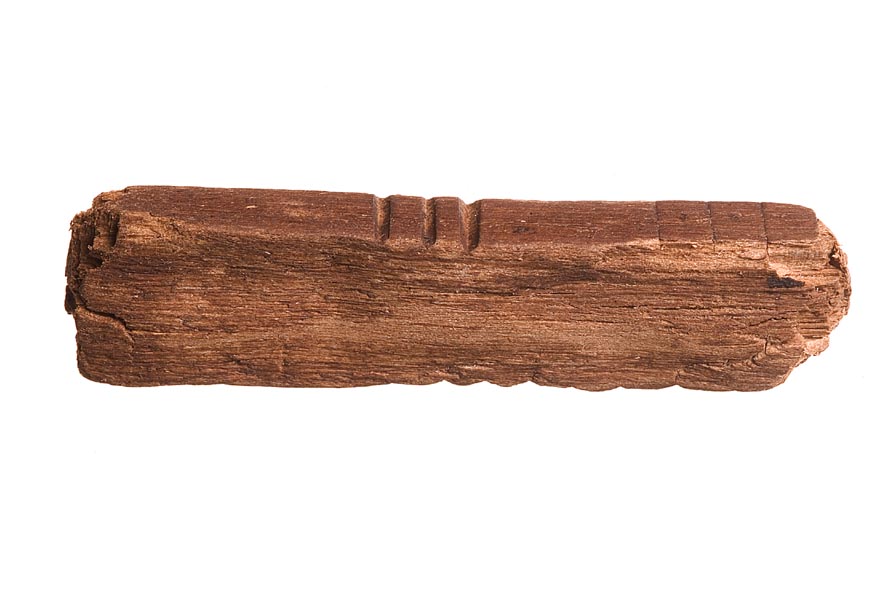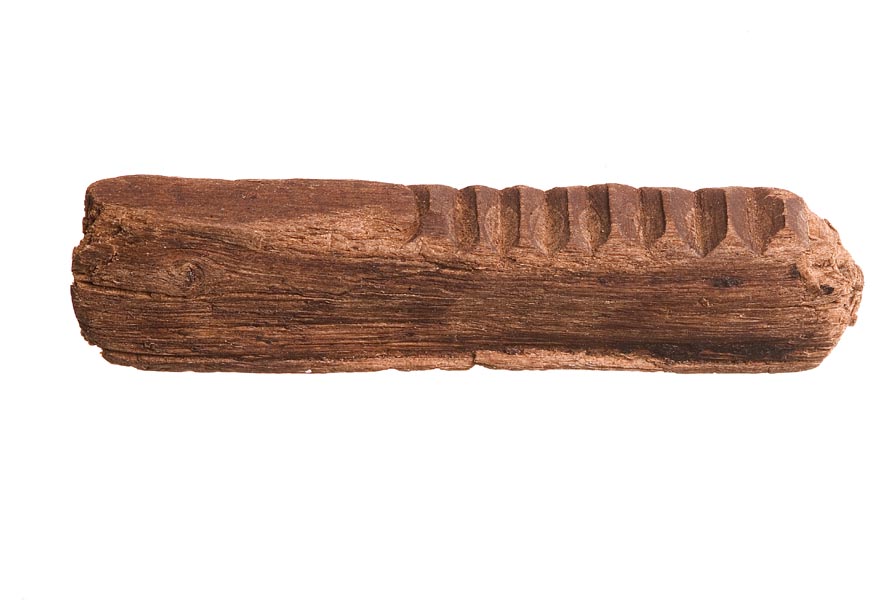About this object
-
ID:
MLK76[3061]<327>
Production date:
Early Medieval; late 13th century
-
Location:
In Store
-
Tally sticks were used as receipts for loans or other payments. Notches were cut into them recording the amount of money involved, and then the stick was split lengthways. Both people taking part in the transaction would keep a piece as proof. When the debt was paid, the two pieces were compared to check the amount. The size of the notches indicates the sum of money. This tally stick was found in a cesspit behind a row of houses on Milk Street that belonged to Jews at various times in the 1200s. Jewish settlers were often moneylenders - perhaps this tally stick was thrown away after a borrower had repaid a debt? The notches on the stick suggest the amount: 9+ medium notches on one side and 3 small notches on the other, then 4+ notches after a gap. As the stick is broken, it is hard to be sure of the total amount but it was possibly nine pounds, four shillings and three pence (the equivalent of around £4,250 today). < ...Read more
-
Measurements
L 53 mm; W 13 mm; D 7 mm
-
Materials
wood; alder or hazel
-
Last Updated
2024-03-14
Record quality:
Not every record in Collections Online is complete. Some have low quality images designed purely for recognition, while some have been catalogued only to a basic standard. This graphic is designed to give you an impression of the quality of data you can see. 100% meets all our current data standards and has a high quality image, 20% is a basic record with no image. Individual record quality can change over time as new photography is carried out and records are worked on.
X








